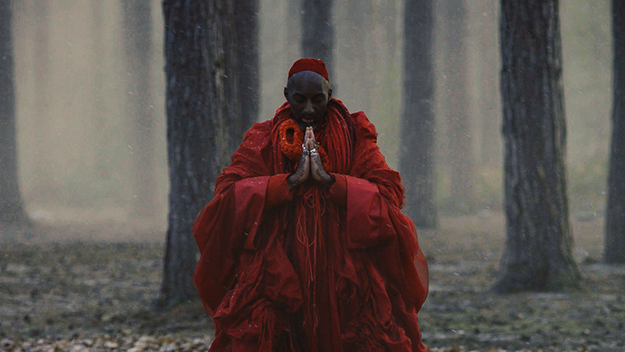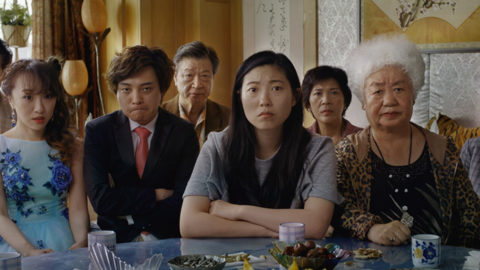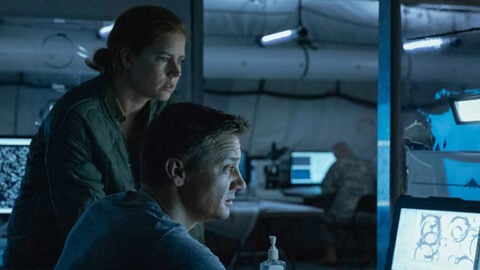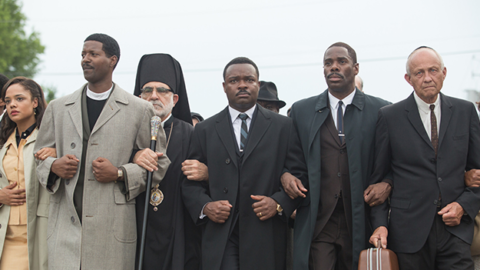Sundance Dispatch: As Told to G/D Thyself

In Space is the Place (1974), pioneering jazz musician and philosopher Sun Ra embarks on a quest to resettle the African-American population of the earth on a foreign planet, envisioning a timeless existence free of the historical injustices of racism. He travels—and transports others—through space-time with the aid of music; as he flies away on his spaceship at the end of the film, the Earth implodes while jazz plays in the background. The transporting powers of music combine with the malleable possibilities of film to make possible the image of an alternate future.
The spirit of Sun Ra’s radical Afro-futurism is embodied beautifully in As Told to G/D Myself, a 24-minute short featured in the New Frontier section of this year’s Sundance Film Festival. Intended as a visual companion to saxophonist Kamasi Washington’s much-acclaimed 2018 album, Heaven and Earth, the film marries the freewheeling rhythms of Washington’s cosmic jazz to haunting, oneiric images that explore themes of Black youth, divinity, and mortality. In one sequence, a triangle of light glides through a set of rooms, flickering in tandem with the erratic movements of a song; in another, two young Black boys levitate in the sky, fiery orbs at their hands, as the music rises to a crescendo.
As Told to G/D Thyself is the pilot project of the “The Ummah Chroma,” a collective consisting of a veritable murderer’s row of young creatives: writer-director Terence Nance (Random Acts of Flyness); cinematographer Bradford Young (Selma, Arrival); filmmaker Jenn Nkiru (Rebirth is Necessary); director-editor Marc Thomas (Michael and Javier), and Washington.
Speaking in Park City the morning after the premiere of As Told, Nance explains that for him, the instinct to collectivize came from the desire to “eliminate the hierarchies and the military culture that are very much a part of the historical framework of film sets.” It’s harder to “get to an unknown or some feeling of surprise” when working as an individual, he says.
A sense of discovery certainly pervades As Told, which functions as a series of isolable and unpredictable moments connected by a musical—as opposed to narrative—logic. It spans everything from images of pagan rituals in the forest (shot by Nkiru in London) to scenes featuring a 2001-esque monolith in a field (filmed by Young in Baltimore); overarching themes are hard to discern, which Nance says he prefers, suggesting that the filmmakers were going for “feeling over comprehensibility.”
Certain images do stand out, however. One particularly striking sequence features a faceless man kneeling in a room with a copy of “Black Rage” next to him; in the next scene, he’s writhing on the ground in front of the suspended monolith, features slowly emerging on his face as he screams silently.
“It’s kind of based on Carl Sagan’s idea that if there is intelligent alien life, its form is foundational, immaterial, and maybe even incomprehensible to our state of consciousness,” Nance says. “I think that feels very much within the realm of how black people describe our experience with Westernness and Eurocentricity, and especially with film language.”
Towards the end of the film, a man and a woman embrace as the words “Our time as victims is over”—sampled from Washington’s song, “Fists of Fury”—are whispered over and over again in voiceover. It’s one of the only instances of utterance in an otherwise wordless film, and it ends the film on a note of optimistic apocalypse—a will to stop time and to reclaim it.
For Nance, the futurity of the film lies not in its science-fictional images—a line of thinking he describes as “Occidental”—but in assertions like the above, which challenge the notion of temporality. “It’s about nonlinear time, about our lived experience and the immateriality of the universe,” he says. With As Told to G/D Thyself, Nance and his co-directors transport us to a future that doesn’t lie ahead, but—as Sun Ra says in Space is the Place—on “the other side of time.”
Devika Girish is a freelance film critic. She grew up in India and currently lives in Los Angeles.







